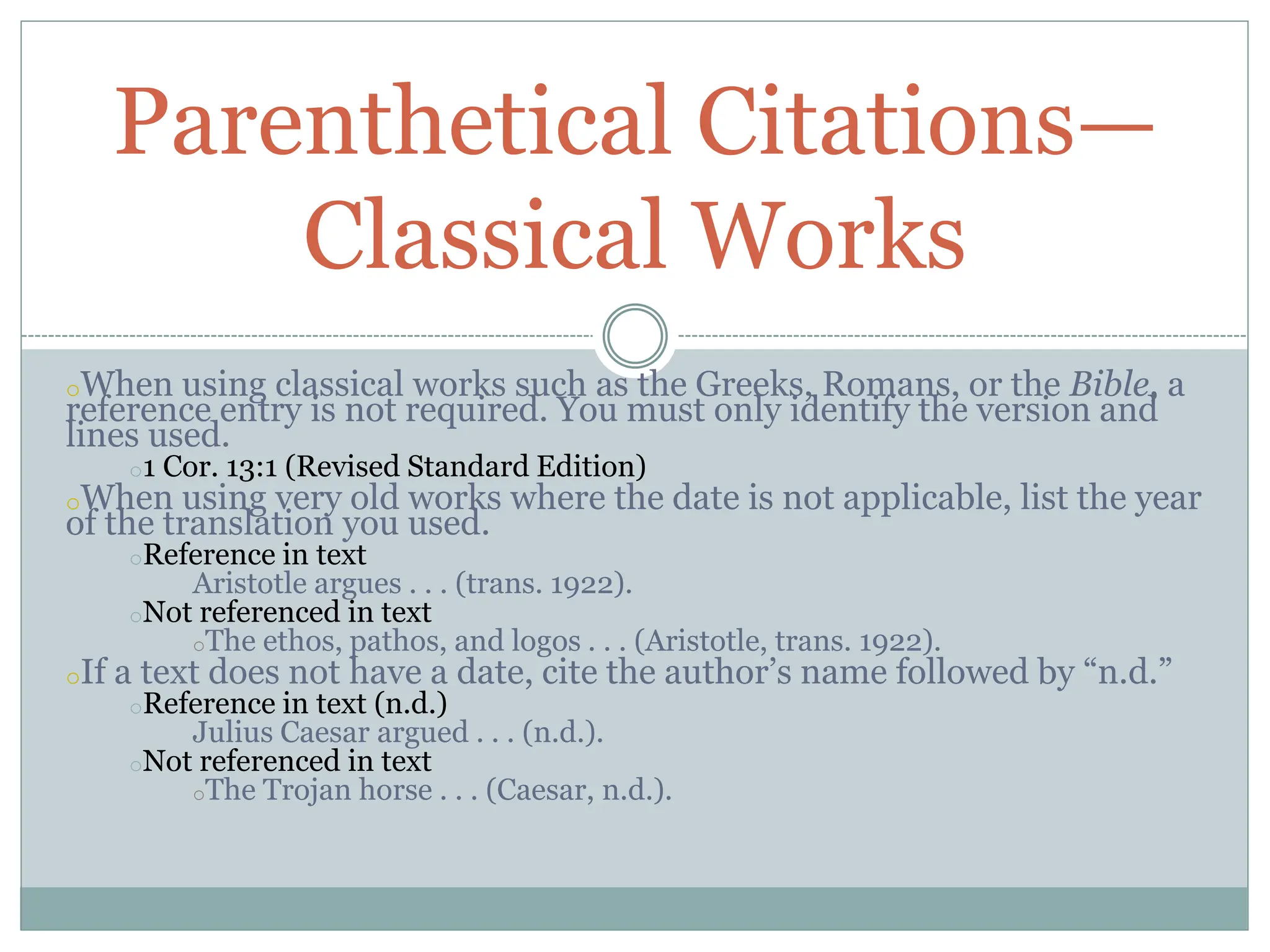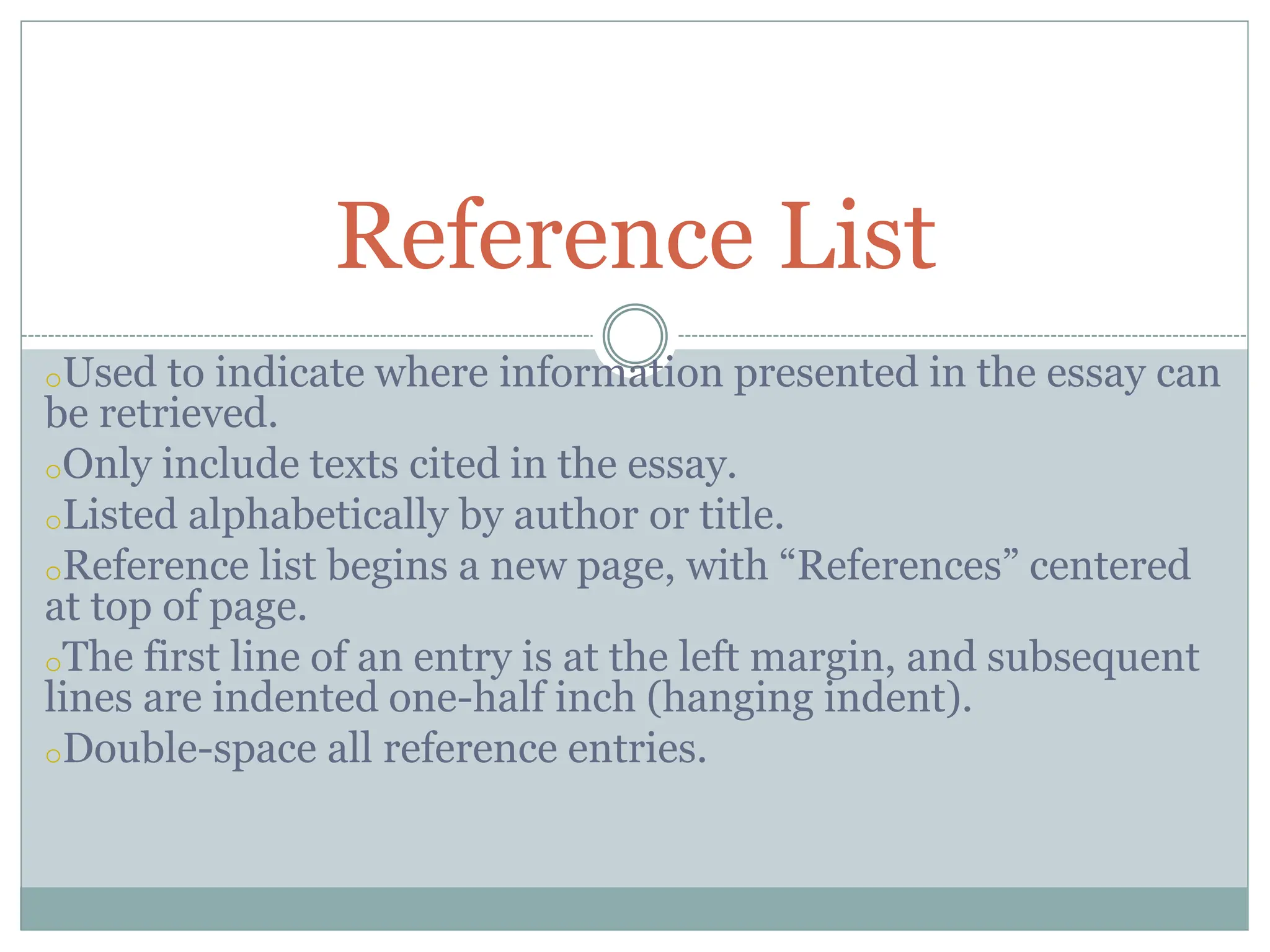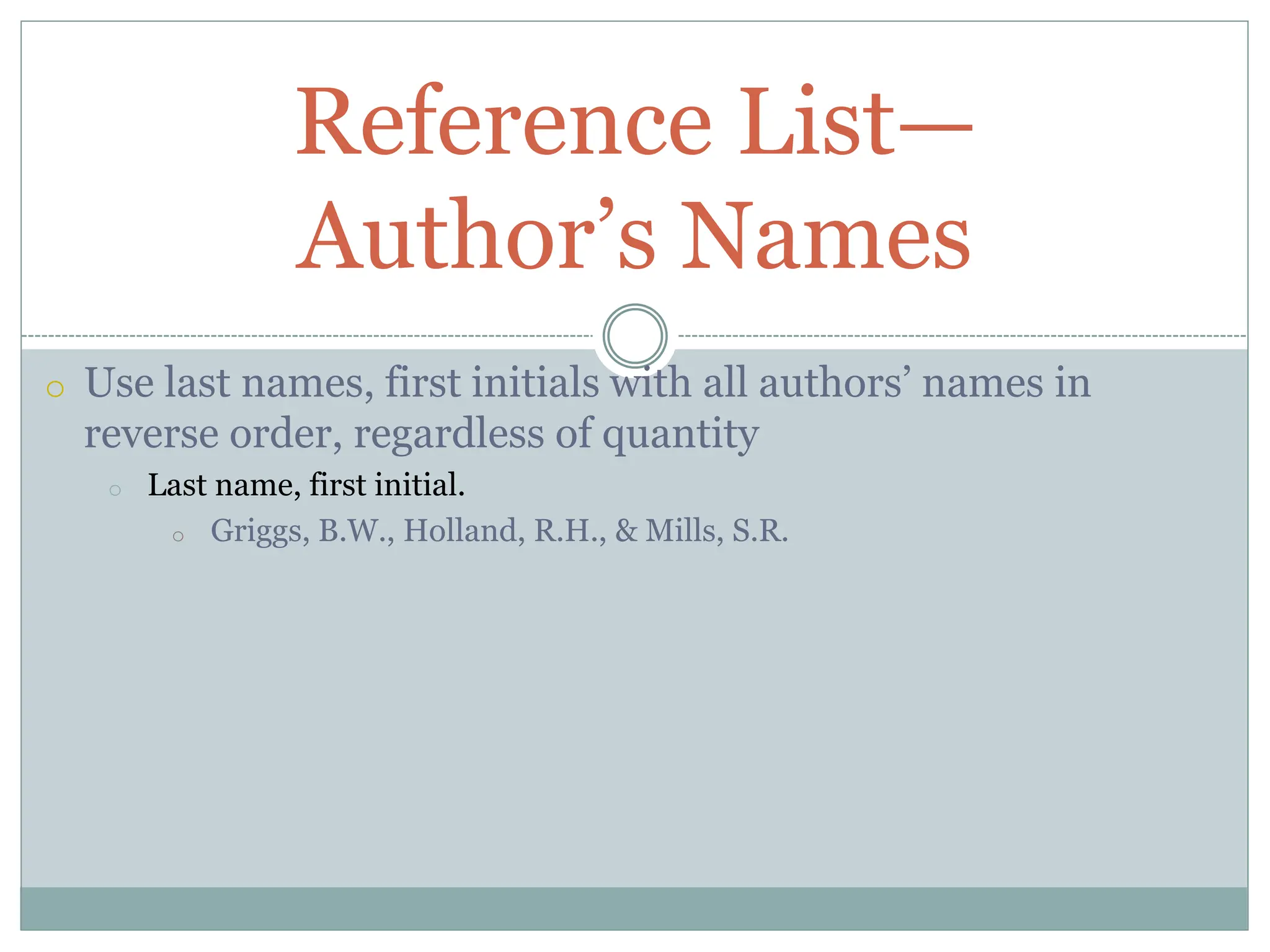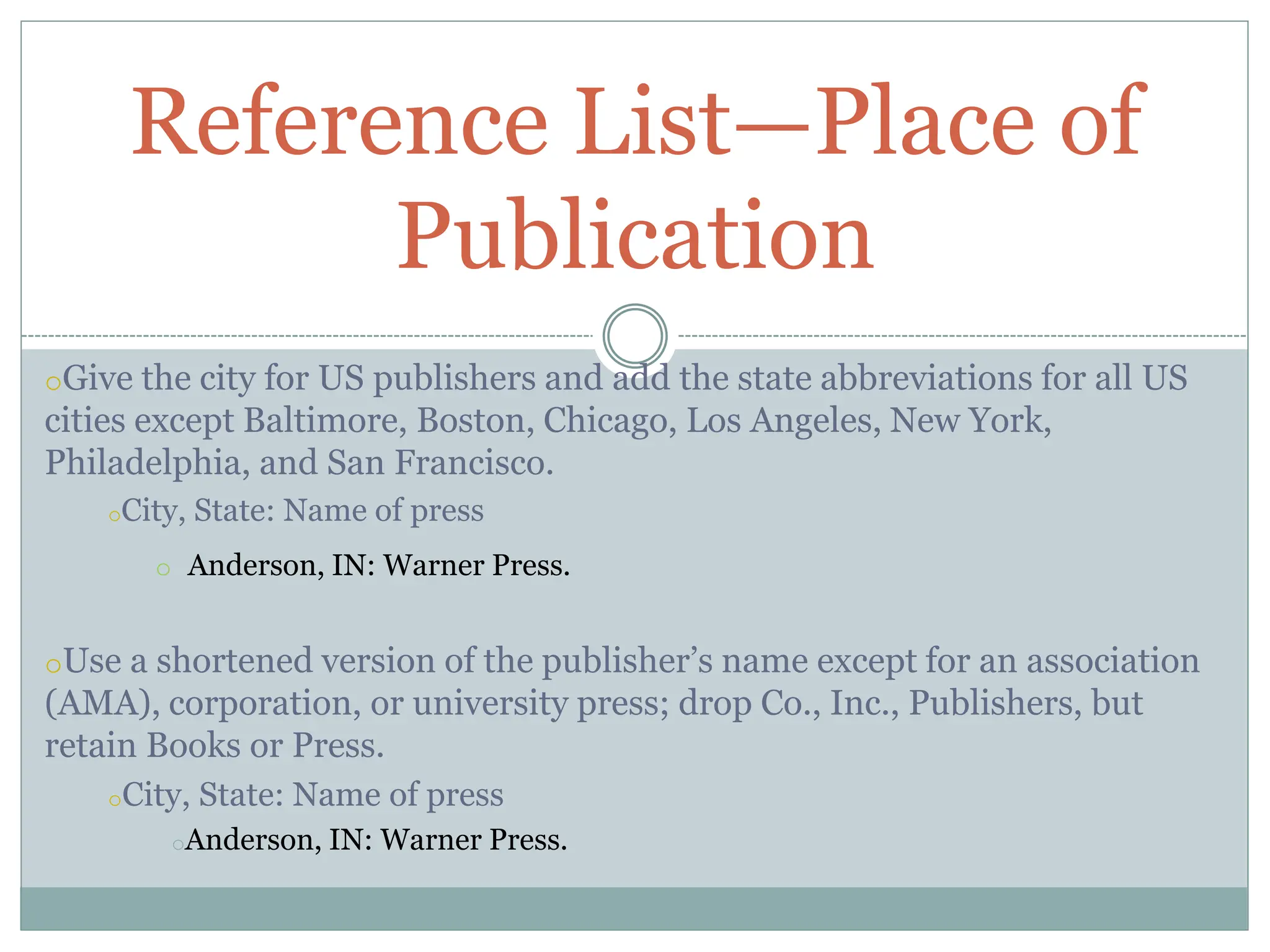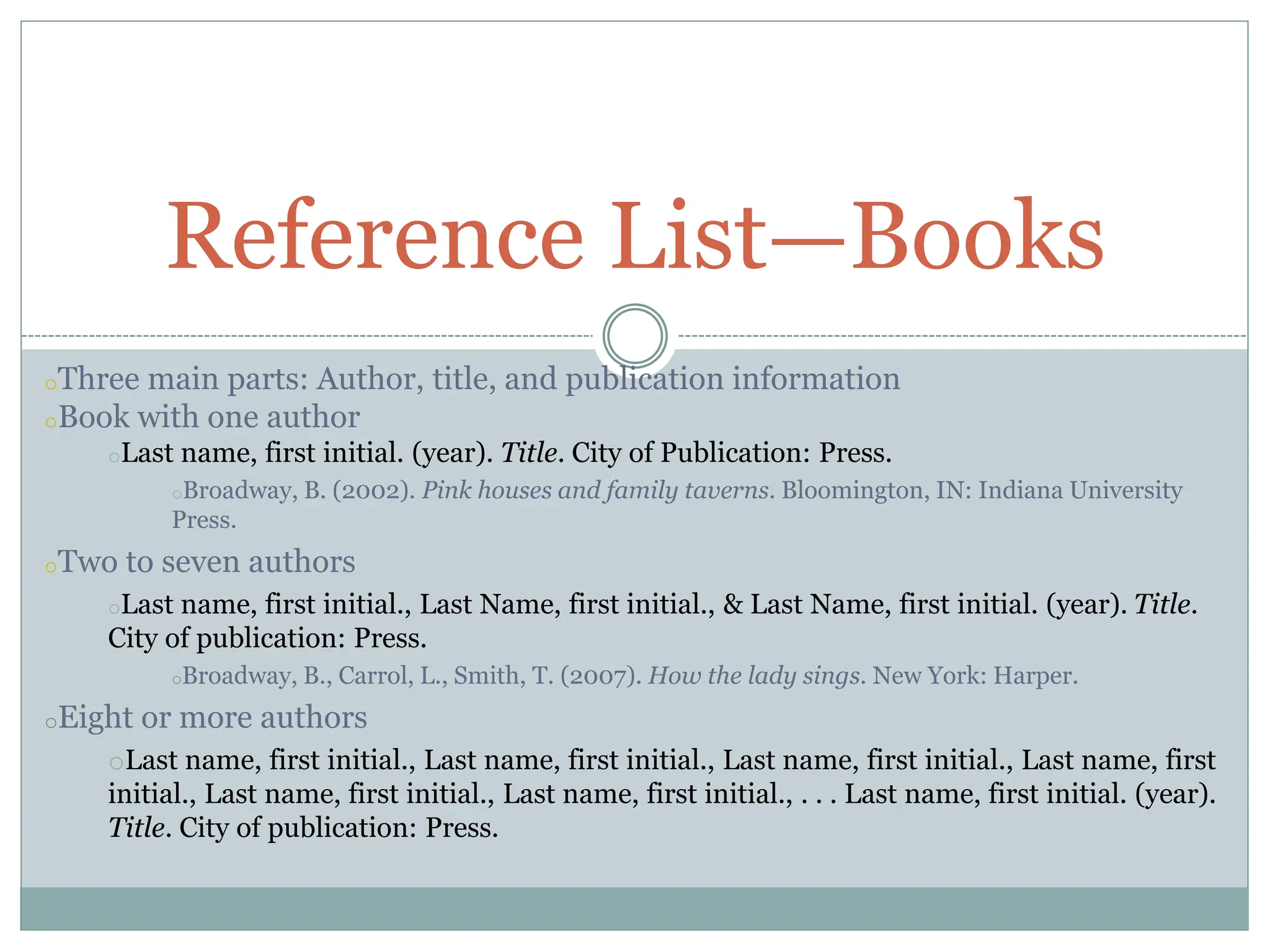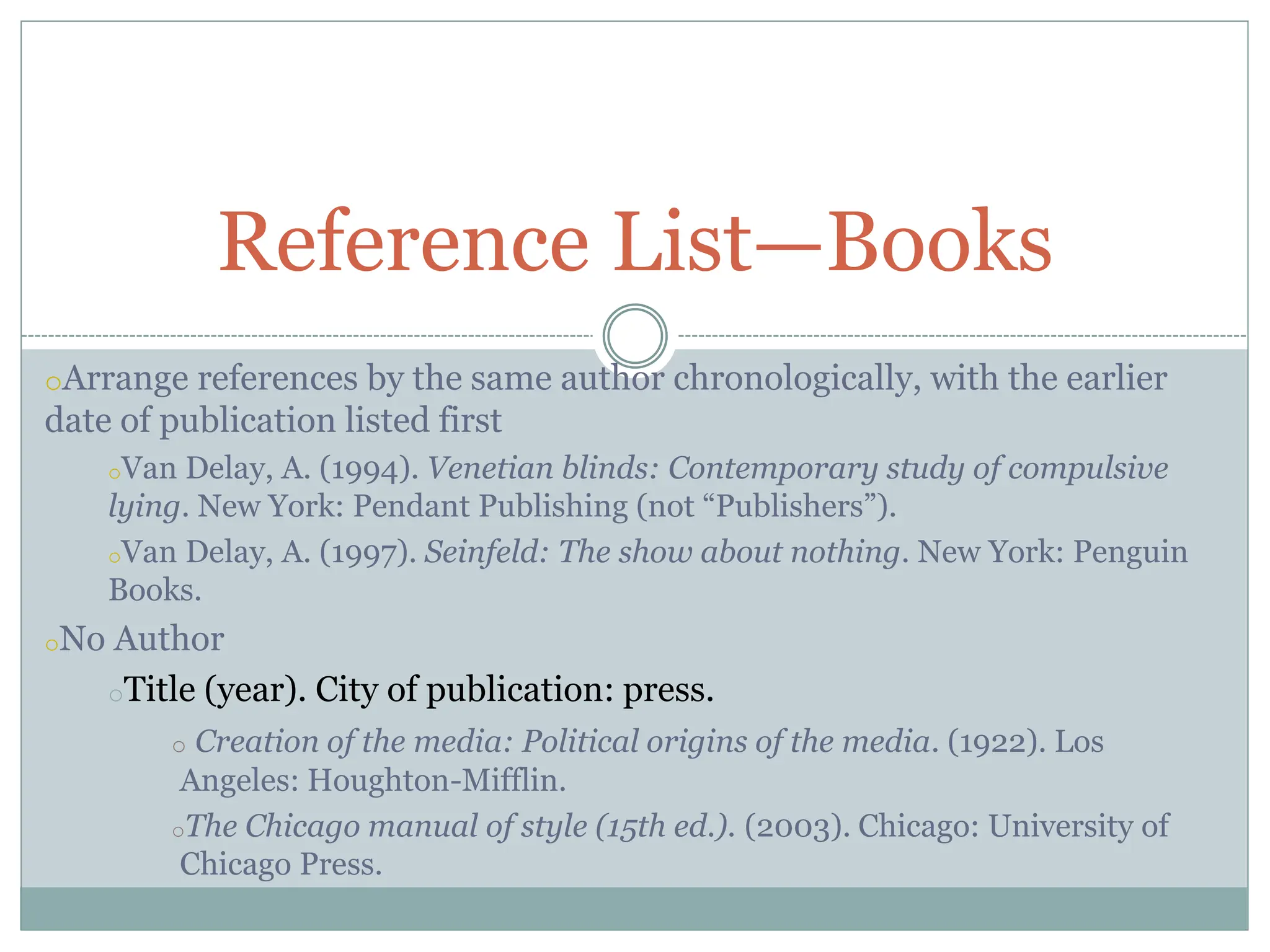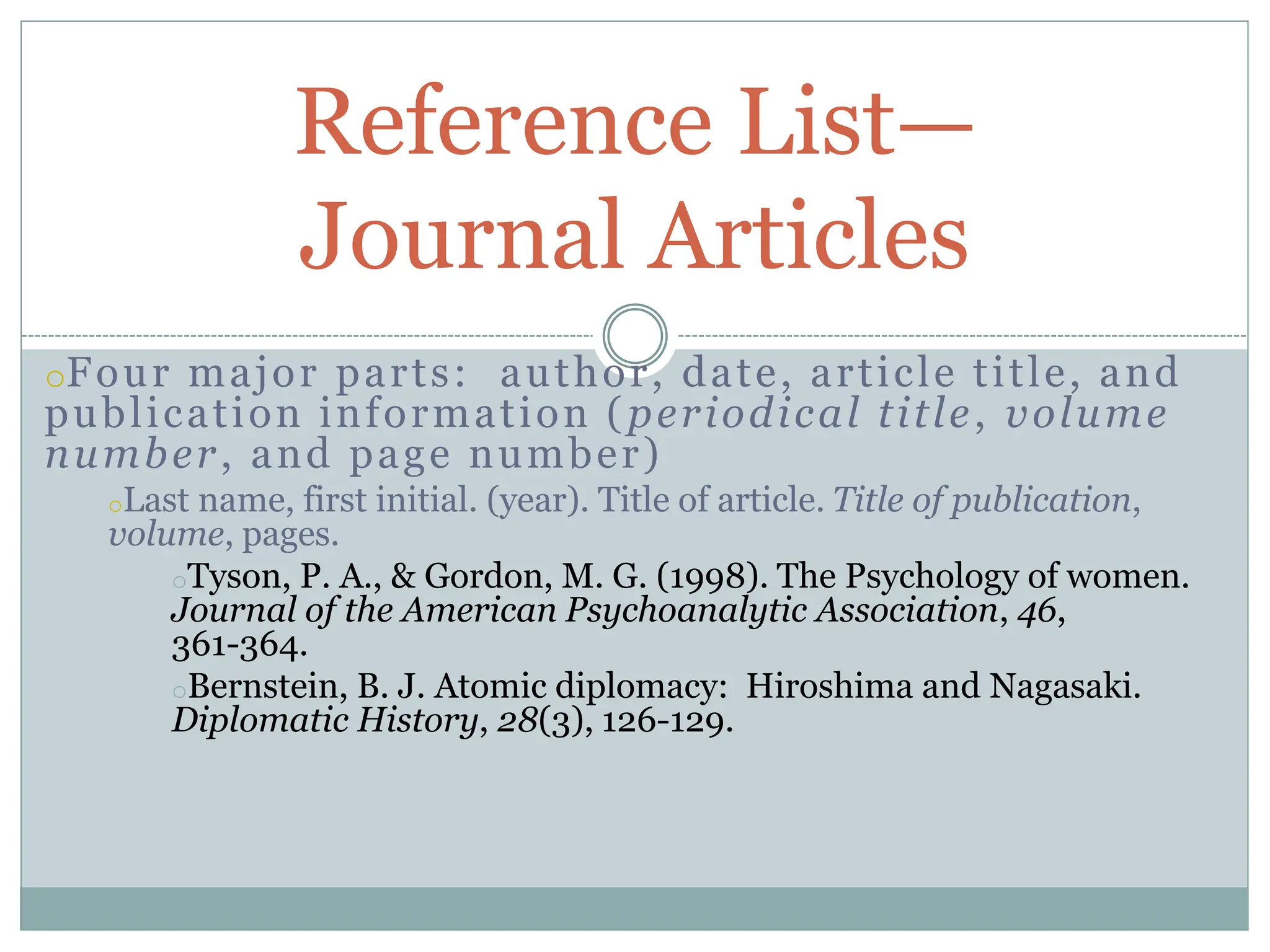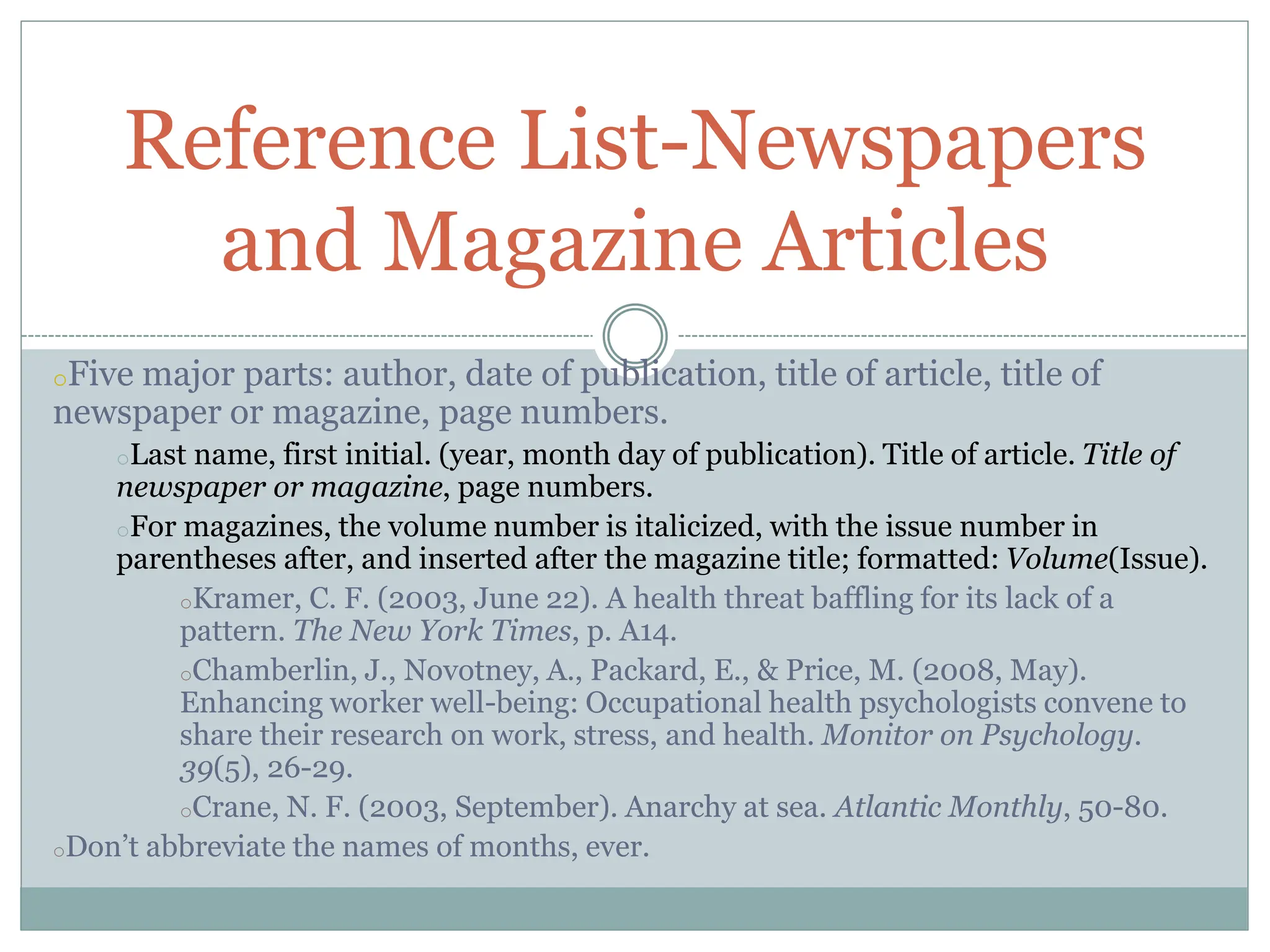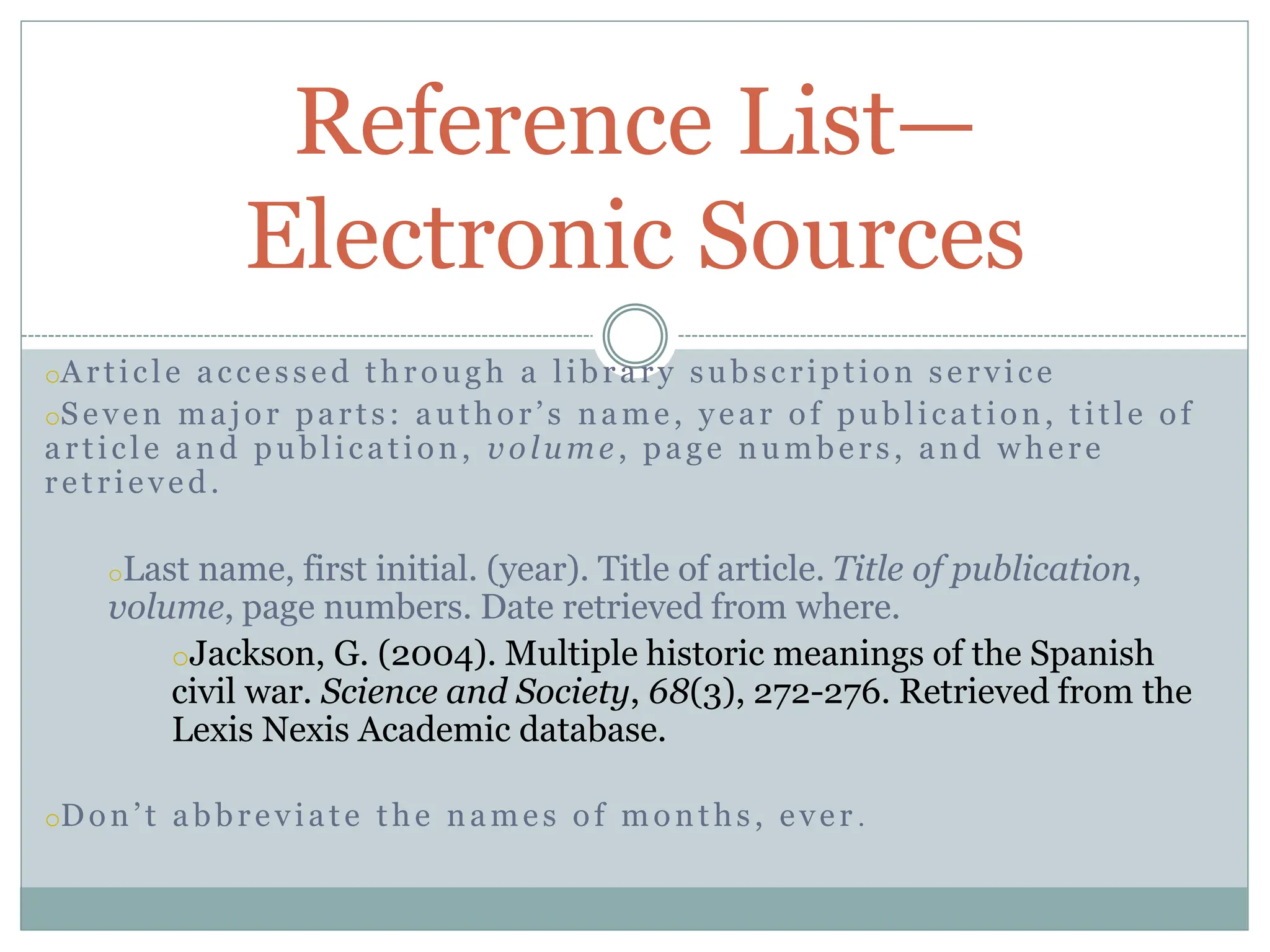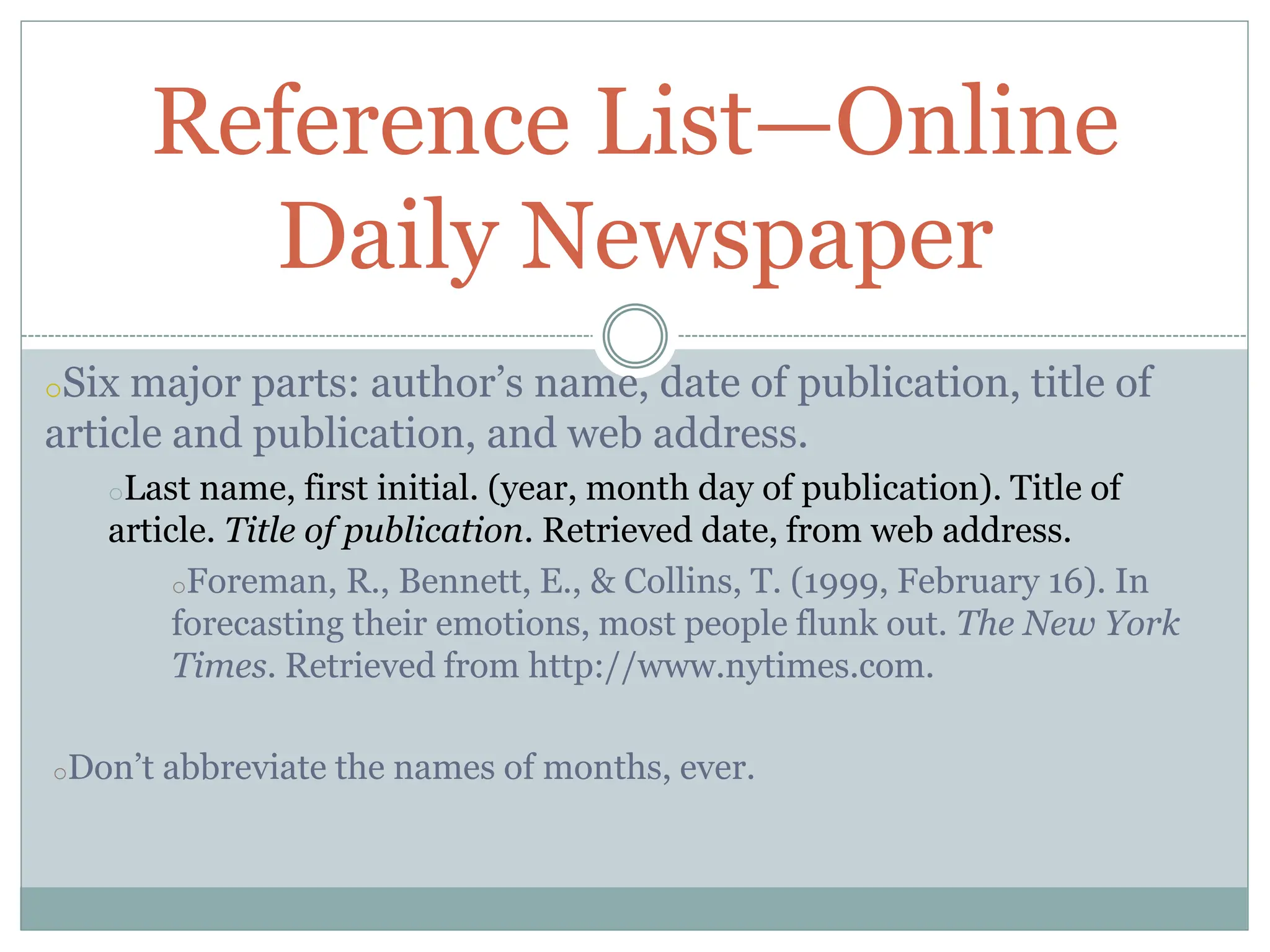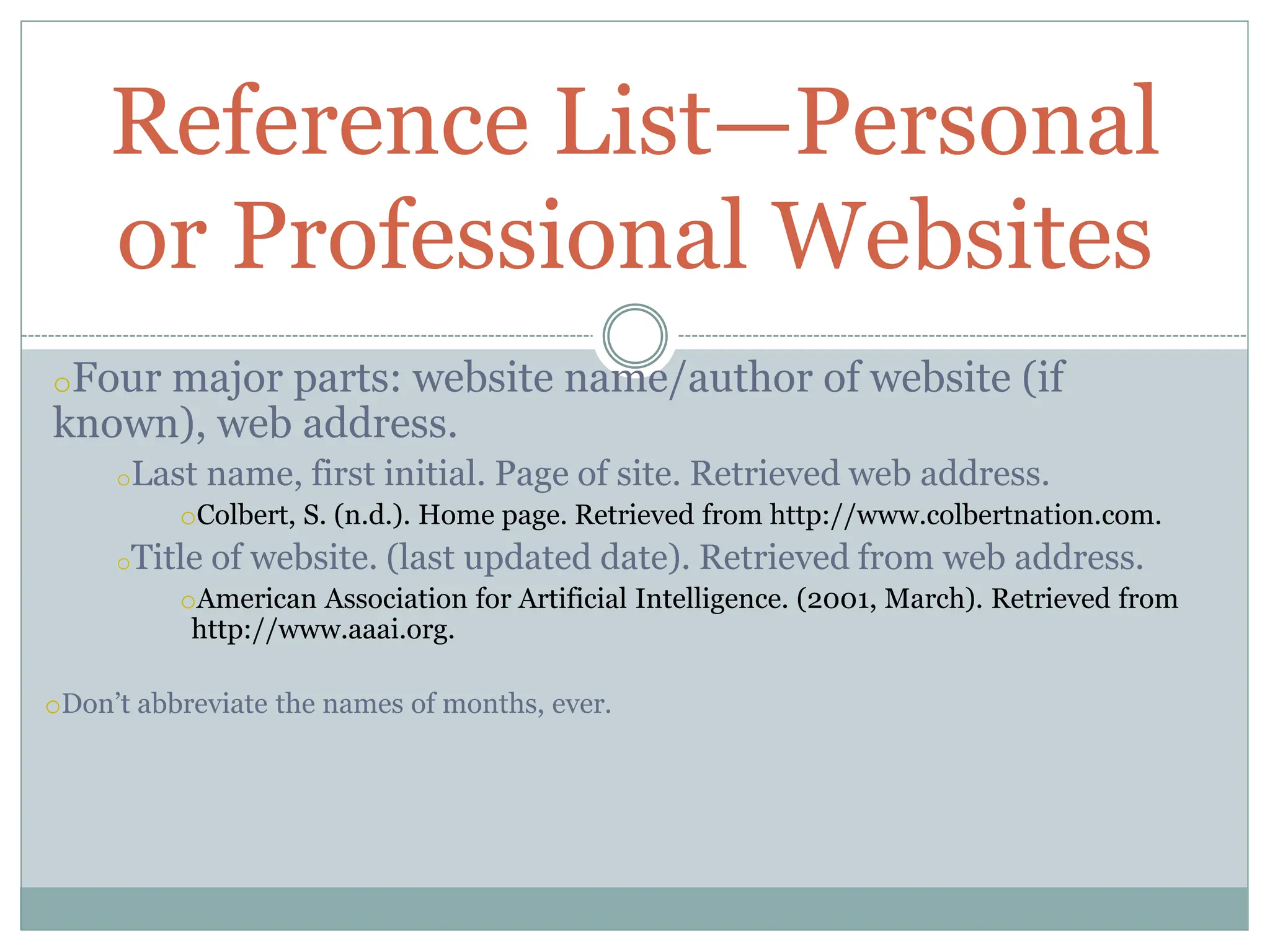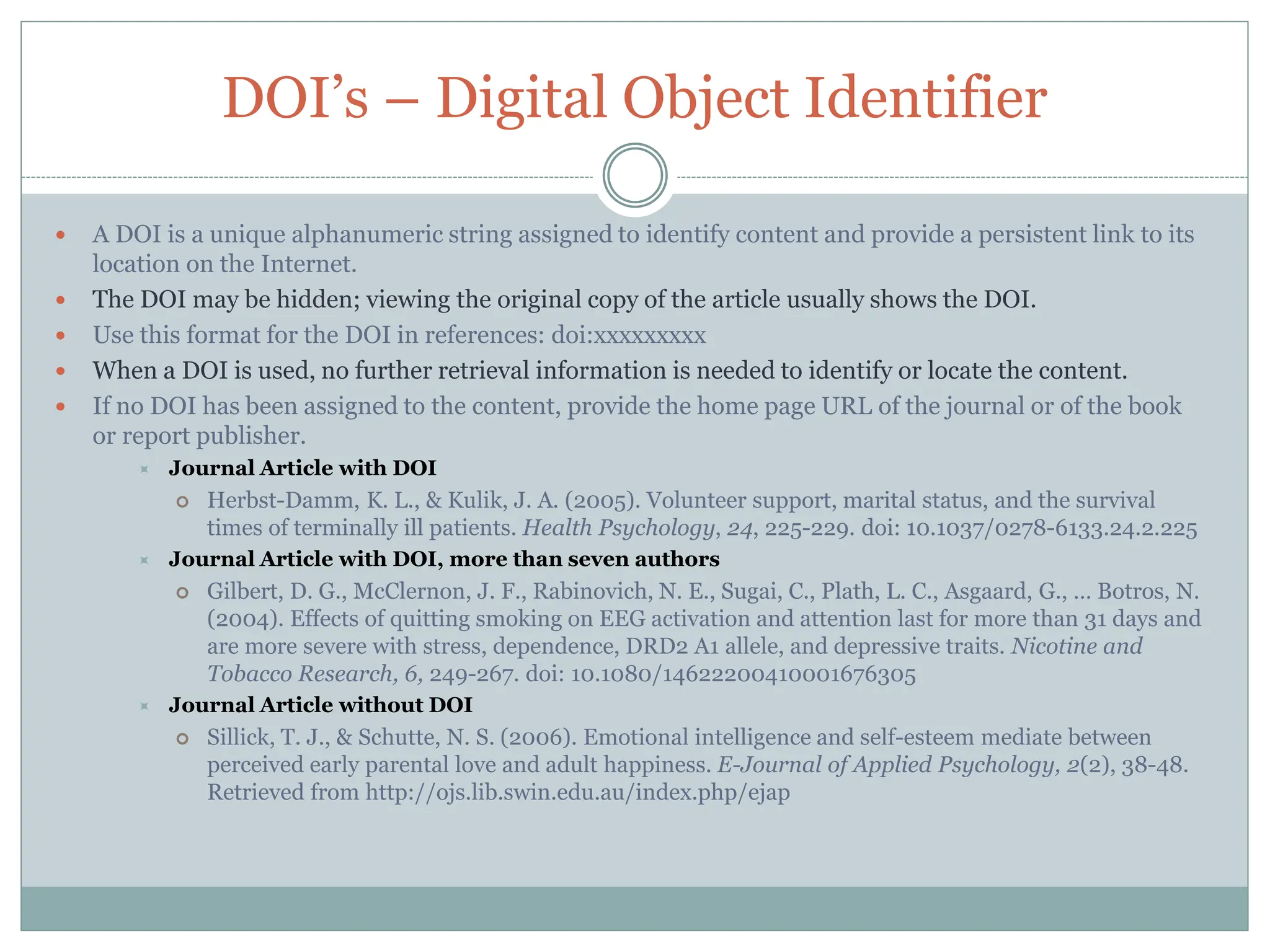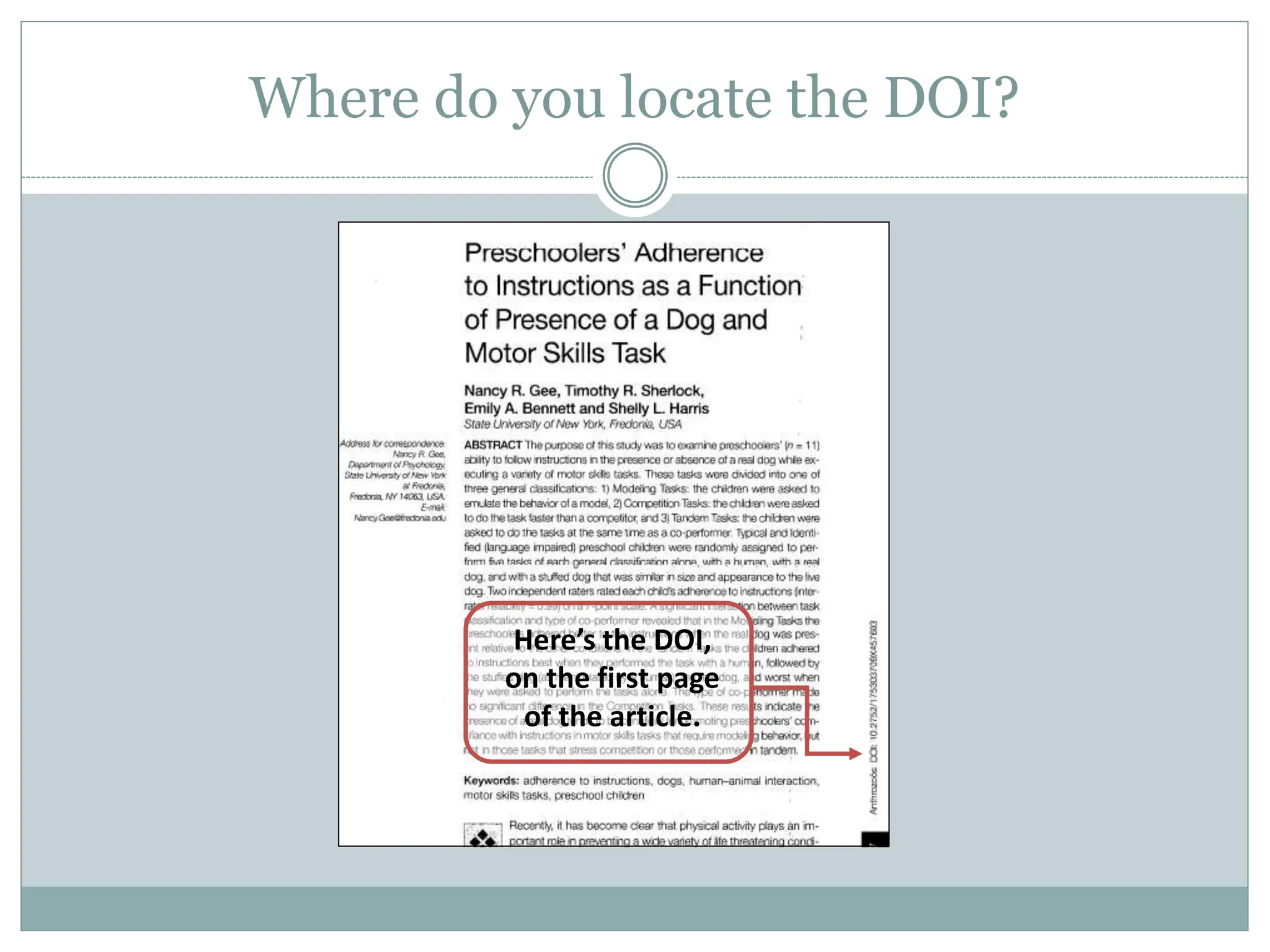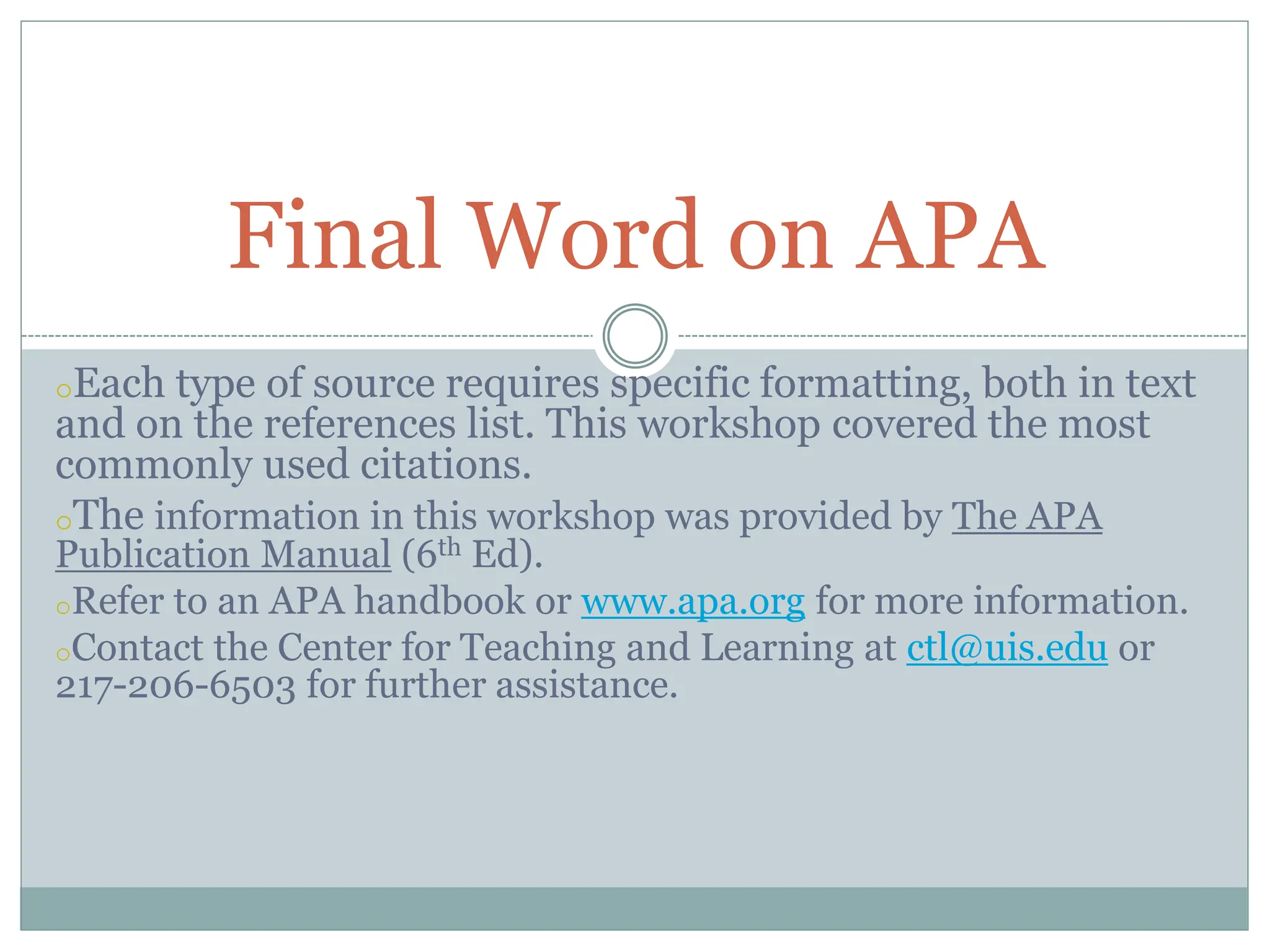The document provides an overview of the American Psychological Association (APA) citation method, including the structure of parenthetical citations, in-text quoting, and referencing styles for works with varying authorship. It outlines specific guidelines for citing direct quotations, paraphrases, and different types of sources such as books, journal articles, and internet resources, emphasizing proper formatting and citation details. Additionally, it explains the use of Digital Object Identifiers (DOIs) in academic references.
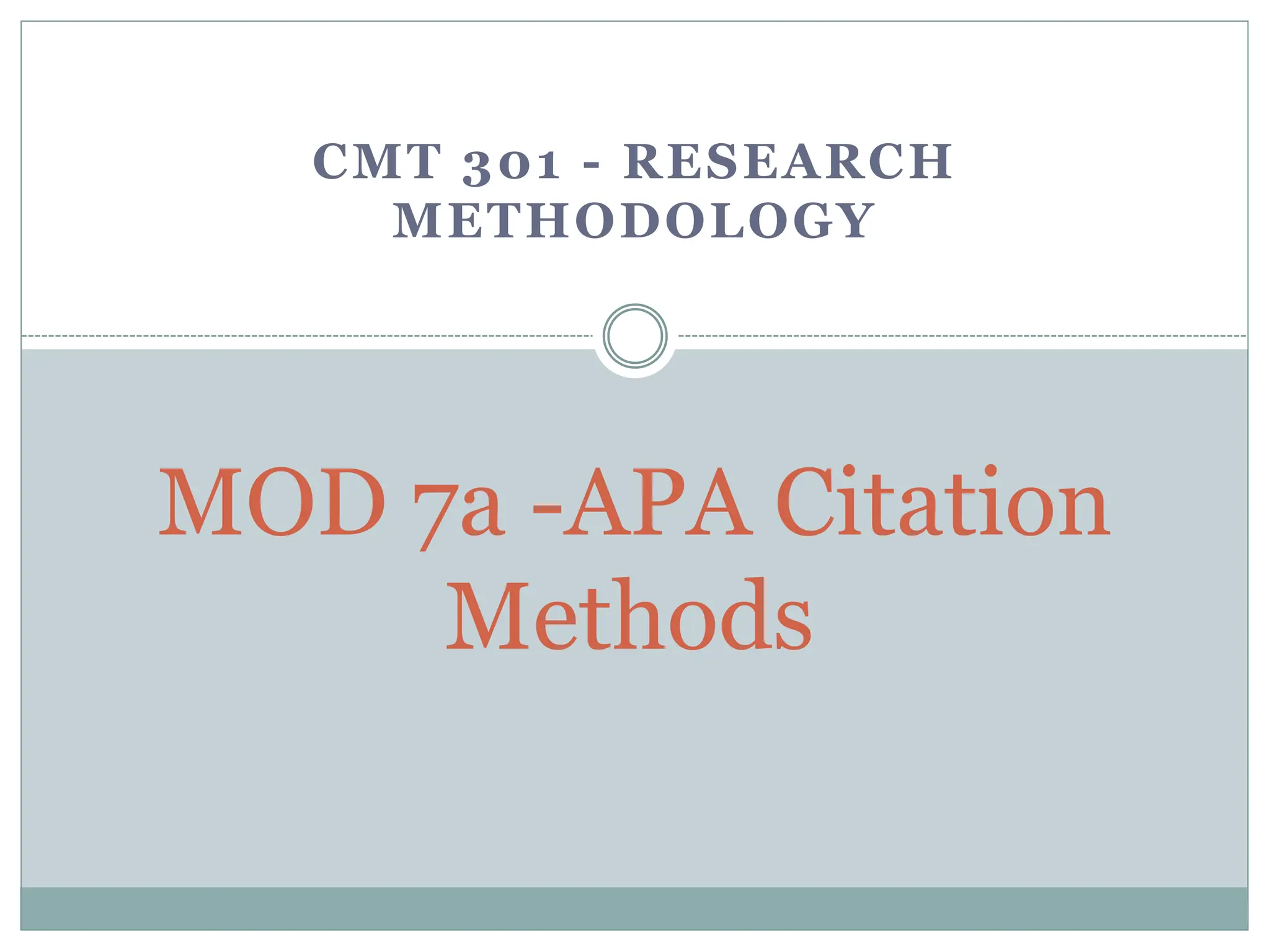
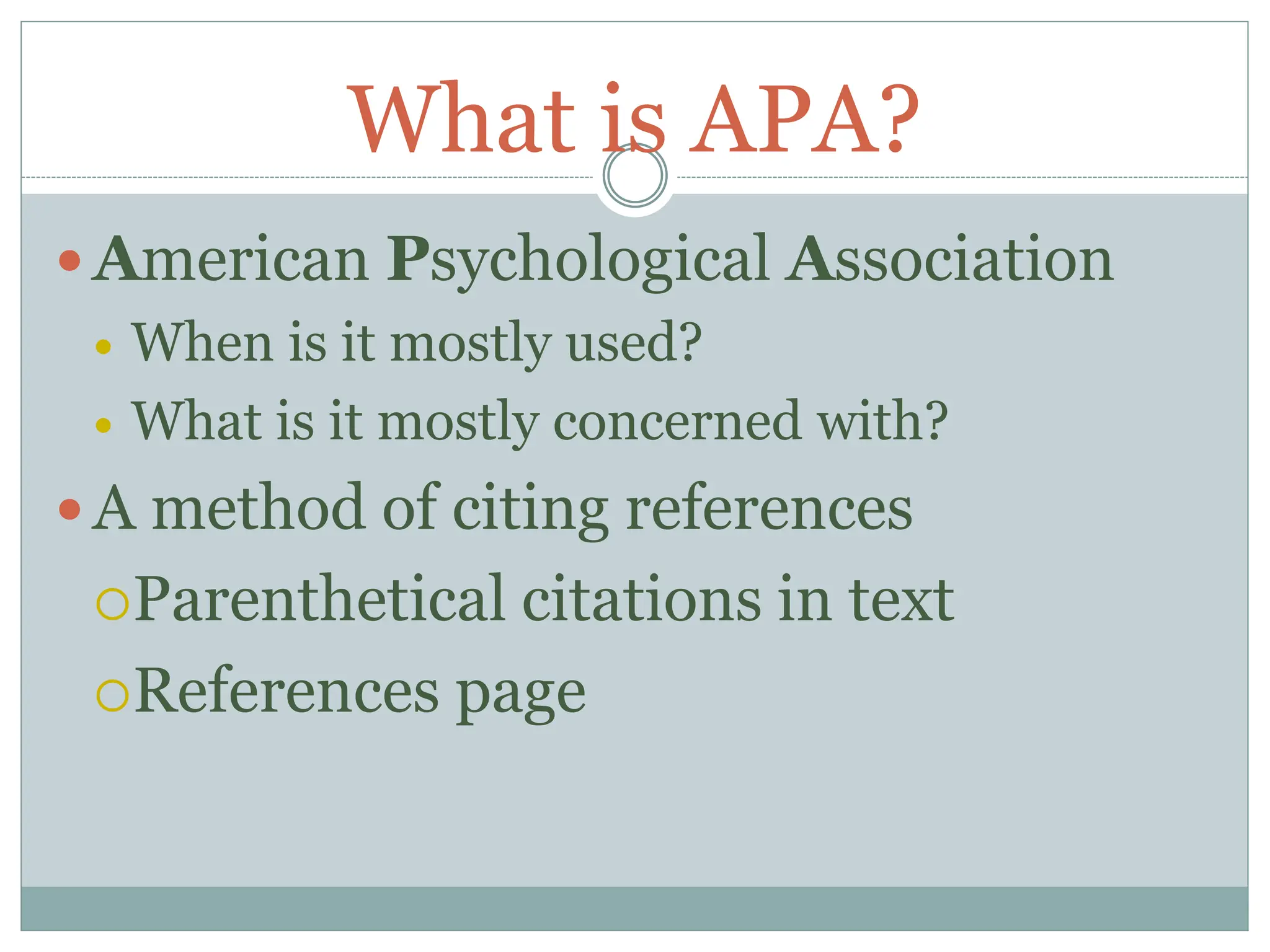
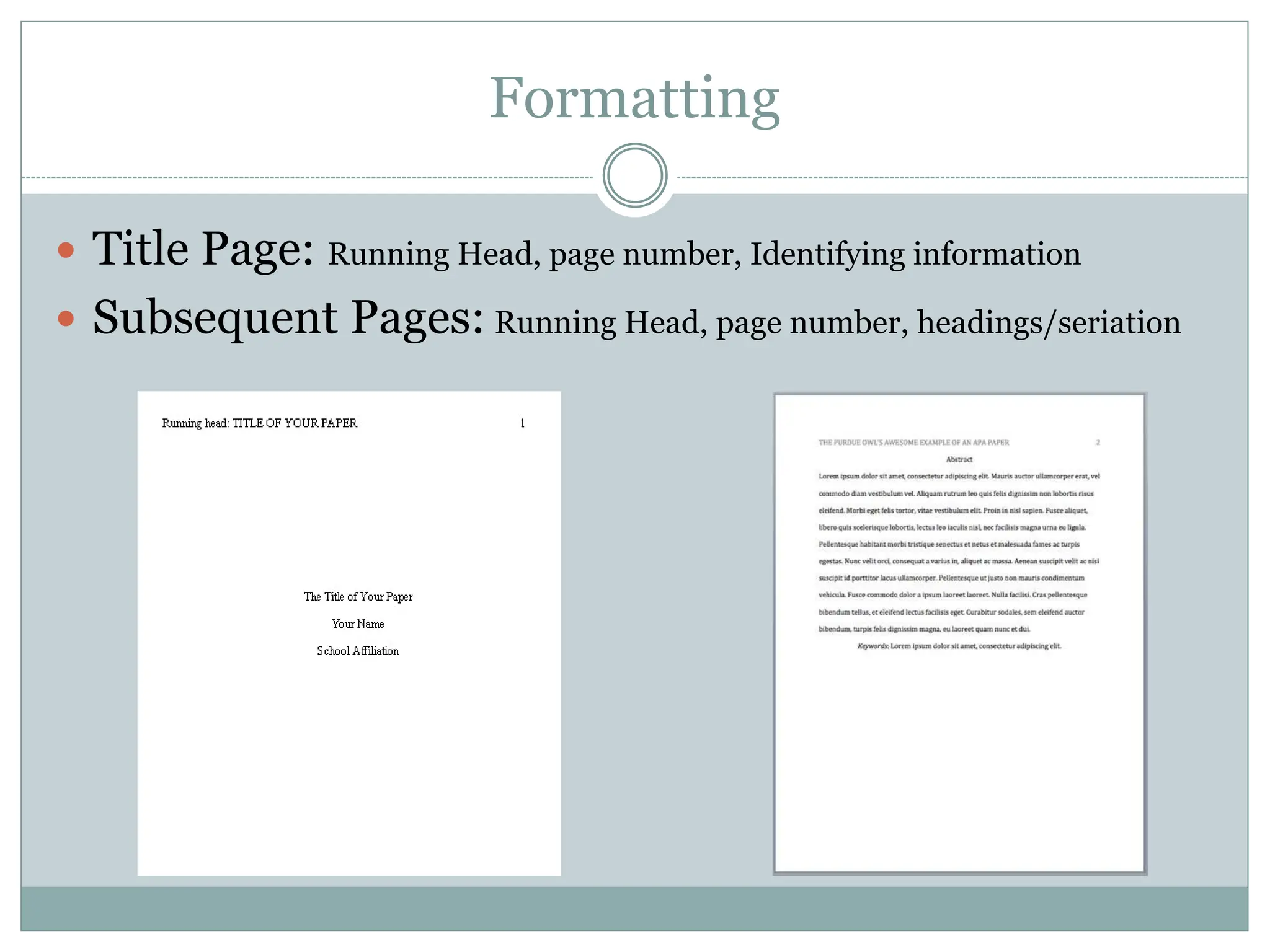
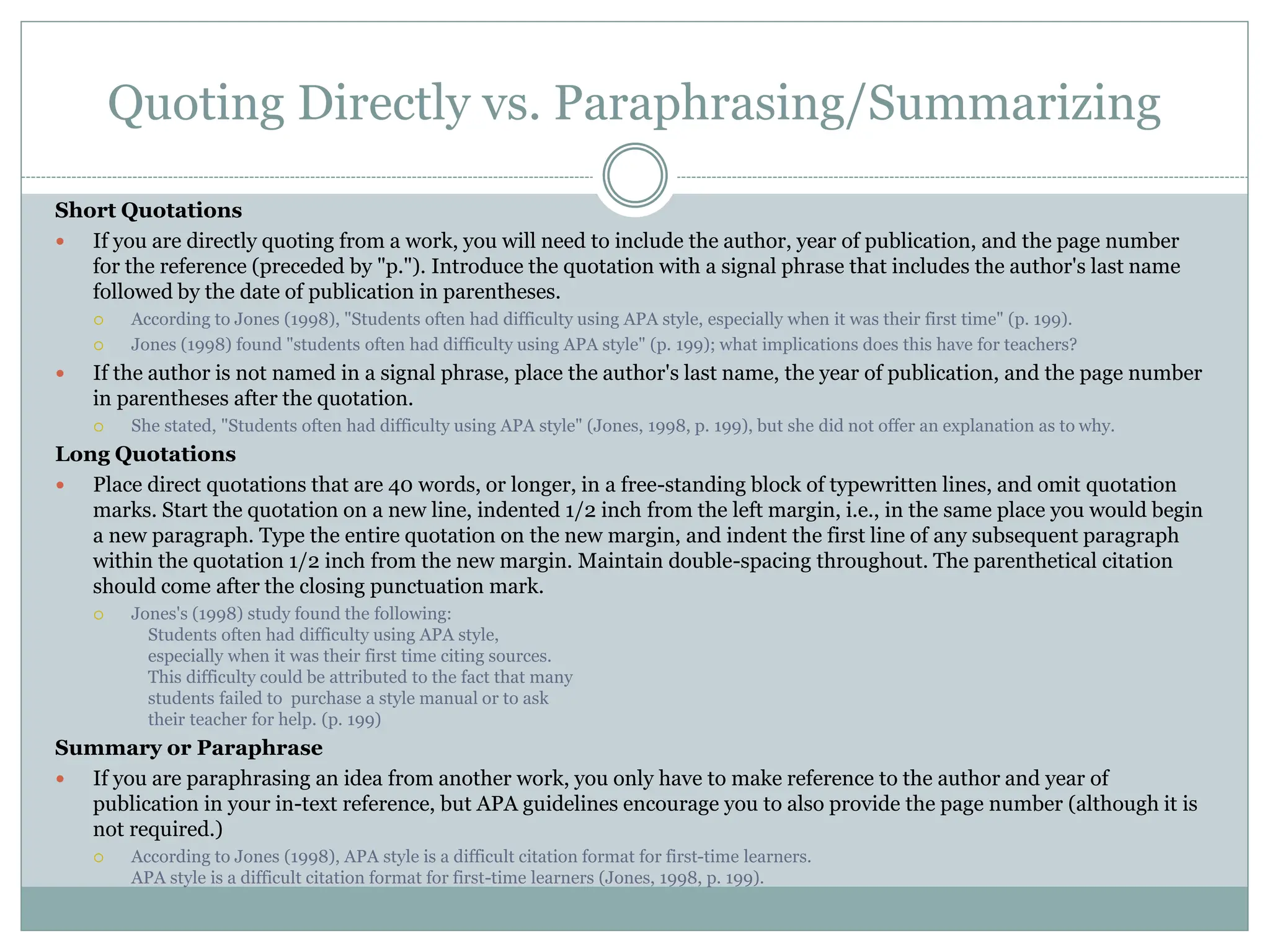
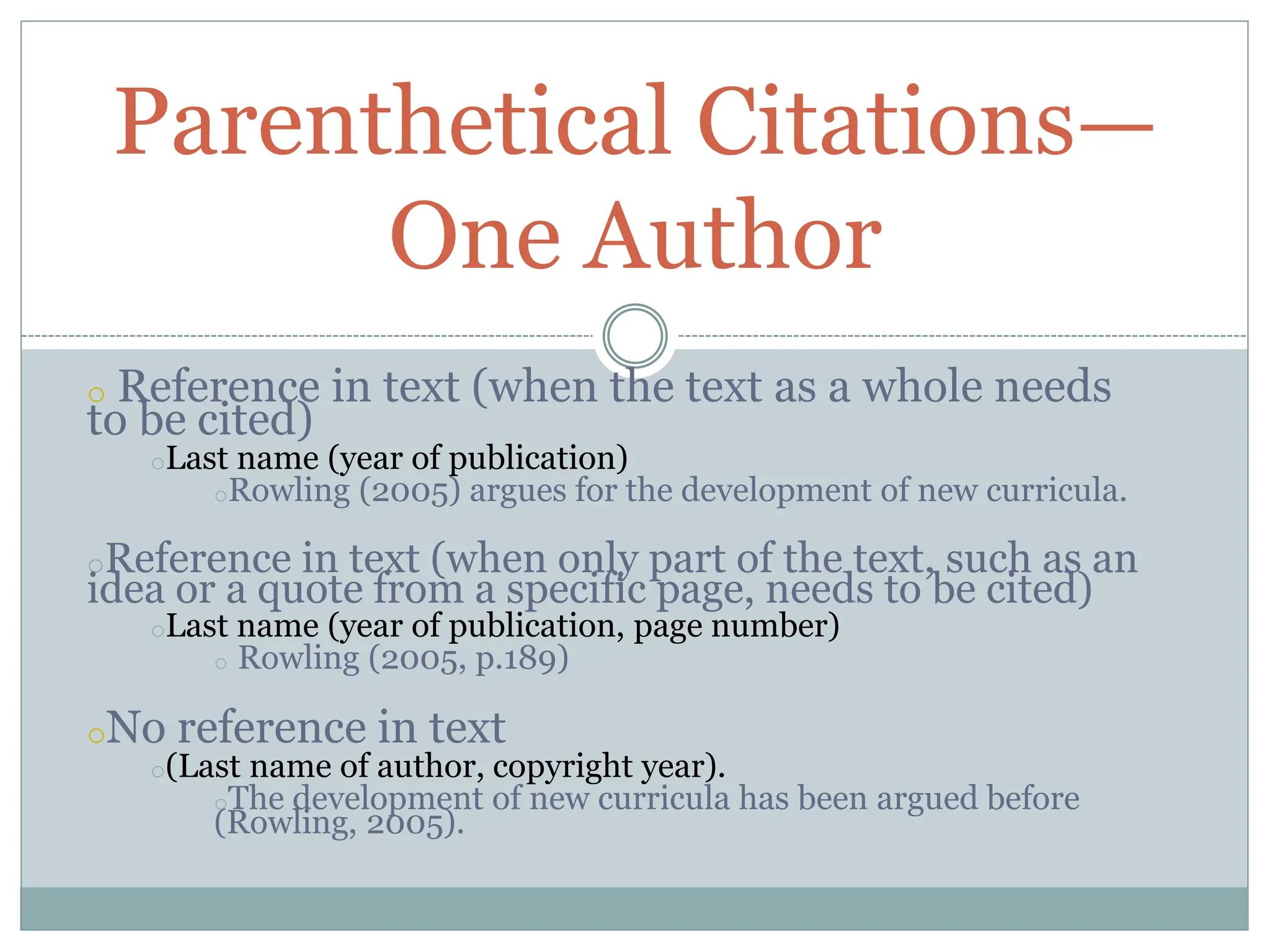
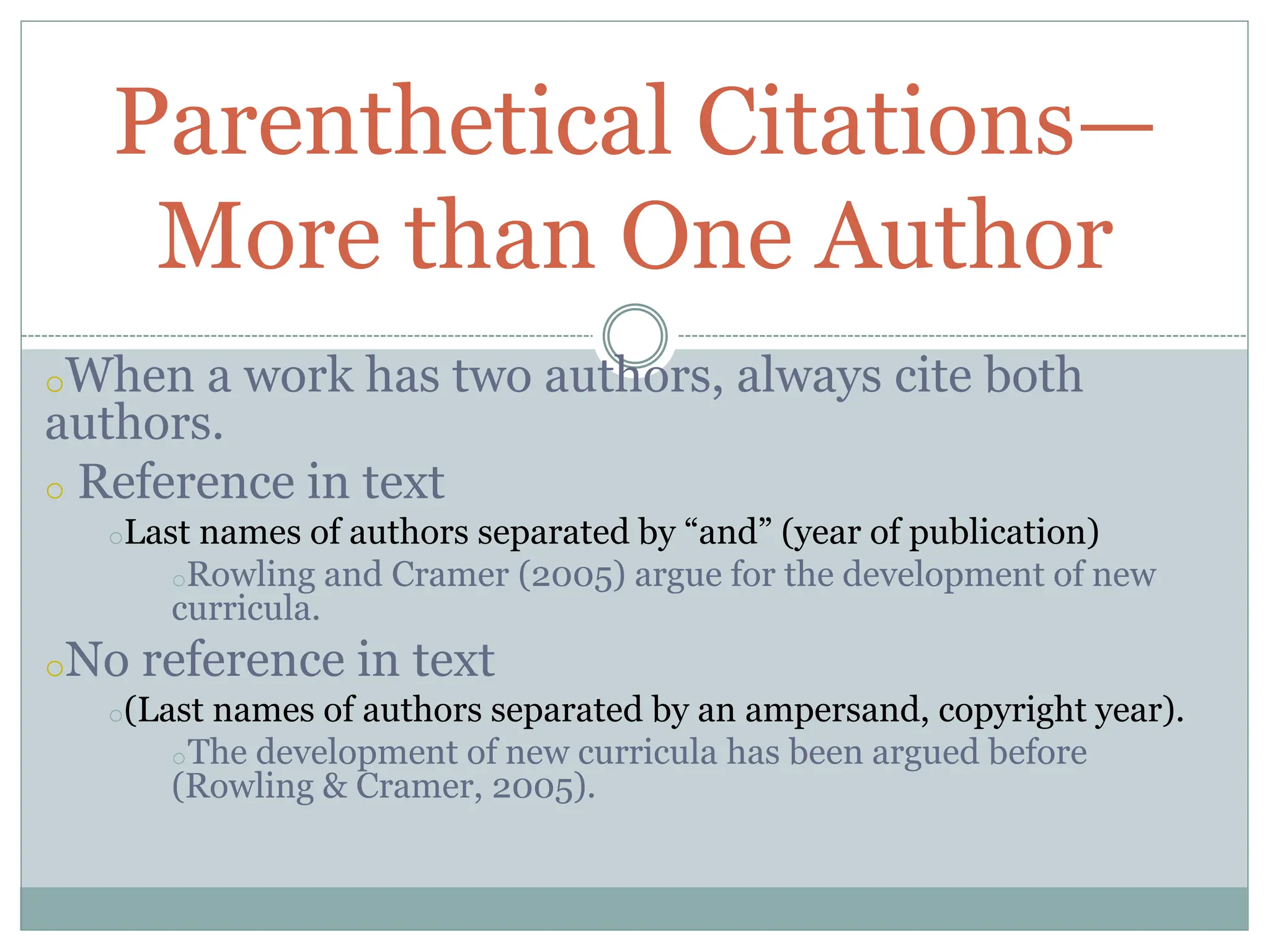
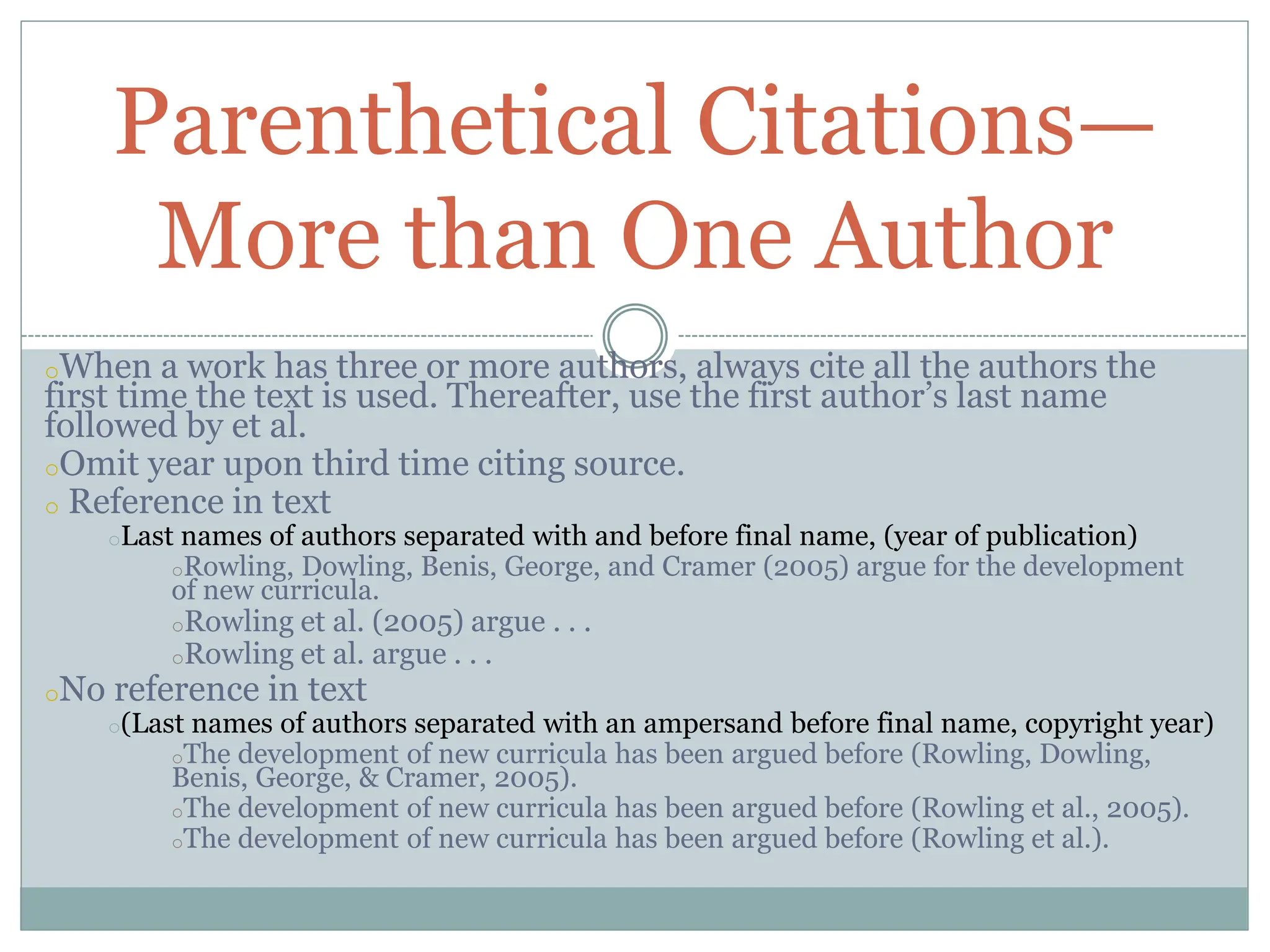
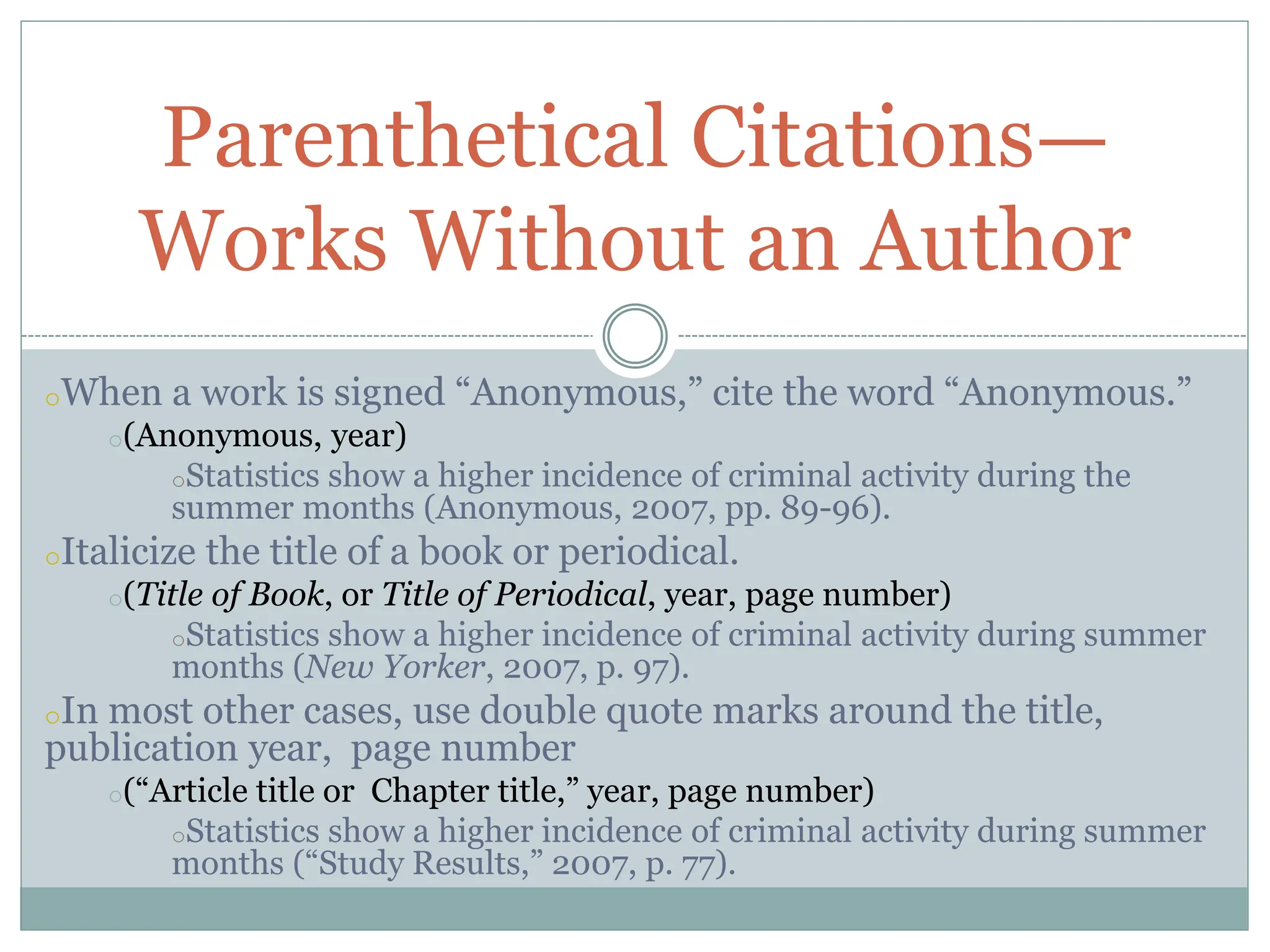
![oCorporations, associations, government agencies, research groups,
etc. are usually listed each time they are used in text, unless an
abbreviation makes the group easily recognizable.
oReference in the text
oFirst time mentioned: Full name (year).
oThe National Institute of Mental Health (NIMH) reports…(2002).
oSubsequent mentions: abbreviation (year).
oThe NIMH reports…(2002).
oNot referenced in text
oFirst time mentioned (full name, year)
o(National Institute of Mental Health [NIMH], 2002).
oSubsequent mentions (abbreviation, year)
o(NIMH, 2002).
o If the name is not easily recognizable by an abbreviation, such as the University of
Iowa, the group must be spelled out each time it is mentioned.
Parenthetical Citations—
Groups as Authors](https://image.slidesharecdn.com/mod7a-apacitationmethods-240509022124-e9579831/75/RESEARCH-MOD-7a-APA-CITATION-METHODS-ppt-9-2048.jpg)
